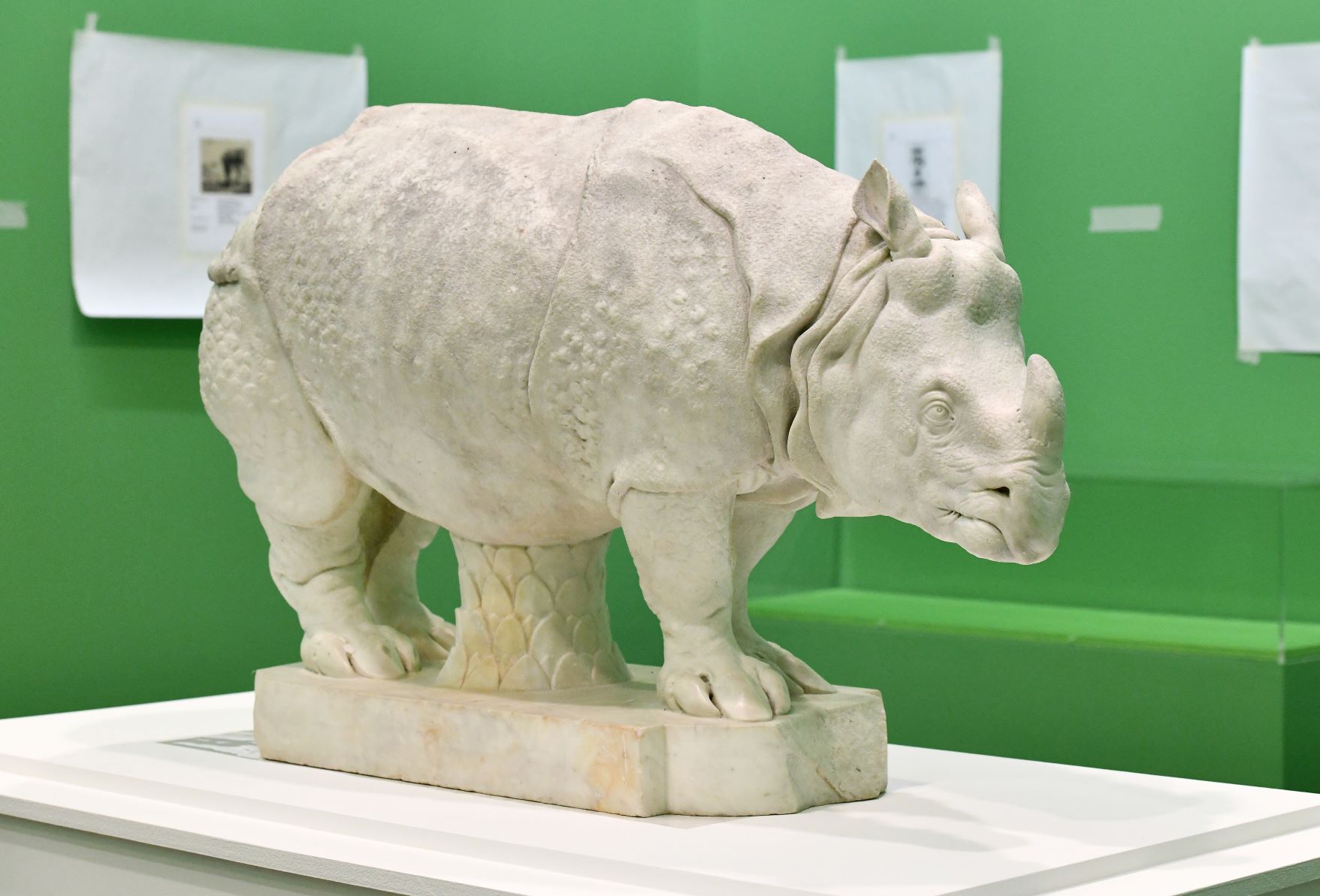
Culture Writers Charis Gambon and Daisy Griffin visit The Barber Institute’s new exhibition about the famous rhinoceros Miss Clara and the art she inspired
Content Warning: this article mentions animal abuse which some readers may find distressing.
Upon arriving at the Barber Institute of Fine Arts, it seemed odd, at first, to be attending an art exhibition centred around and inspired by a rhinoceros named Clara who received immense fame touring through Europe in the 18th century. However, after being given an insightful introductory talk by the curator, Robert Wenley, and some time to walk around, the exhibition proved truly unique.
“It seemed odd, at first, to be attending an art exhibition centred around and inspired by a rhinoceros named Clara
Miss Clara’s tour of all the major cities in Europe lasted from 1742 until her death in 1758 after originally being taken from Northwest India. She received her name from the Dutch sea captain who brought her over to Europe when he commented ‘Miss Clara would you like a sip of beer.’ Between 12th November 2021 and 27th February 2022, Miss Clara will again become a central star as part of the exhibition at The Barber Institute of Fine Arts – the exhibition will be the first major show devoted to Miss Clara in the UK.
Wenley explained how the inspiration behind the exhibition lies in Peter Anton von Verschaffelt’s bronze of Miss Clara that the institute has possessed for eighty years. The sculpture is placed in the middle of a horizontal glass cabinet which viewers are first met with upon entering the exhibition. Wenley expressed his desire to ‘establish how the bronze fits into the story of Miss Clara’ and, when asked ‘if people could only see one thing of Miss Clara which one should they see?’ Wenley responded with ‘[It] has to be ours, the only one that has a complete tail, then the second one would be the big marble rhinoceros.’
The marble statue of Miss Clara, also mentioned by Wenley, is a unique, larger version from the Rothschild Family Trust. The statue has never been displayed publicly before and as a result, visitors to the Miss Clara exhibition will be the first people to be able to witness the beauty of the marble statue outside of the private collection. The marble statue was also created by the same sculptor who made the bronze owned by the Barber Institute.

The items that represent Miss Clara are truly fascinating and, during her time touring Europe, she attracted quite the artistic interpretation. All classes of people were fascinated by her, with those in higher class society creating statues of Miss Clara while lower-class society created and dispersed mass-produced prints.
One of the things that stood out most in the exhibition, and what I believe made it so engaging, was the inclusion of such a vast range of artistic responses, whether that be in painting, etching, drawing, or sculpture. This helped to display the huge fascination that Clara was met within each city she visited and the celebrity status she achieved on her tour. The incredibly clear, chronological set-up of the exhibition helped in assisting the viewer to draw comparisons between these different interpretations, seeing which of Clara’s qualities and characteristics artists of the time chose to depict in their works.
“One of the things that stood out most to me in the exhibition […] was the inclusion of such a vast range of artistic responses, whether that be in painting, etching, drawing, or sculpture
As you enter the exhibition, on the right side of the glass cabinet containing the main bronze sculpture, these artistic responses are lined up alongside each other. A painting by Pietro Longhi caught my attention in particular; in the scene, Clara is being watched by Venetians, dressed in carnival clothing, a few of whom are sporting masks. Clara has lost her horn which is instead held by one of the figures who also happens to hold a whip in his hand. These elements all seem to contribute to the rather distressing overtones of the painting, exposing the rather inhumane treatment of her.
“Many animals of the time were ultimately seen and treated as freaks
This sad reality was reflected in other artworks featured in the exhibition, serving as powerful reminders that many animals of the time were ultimately seen and treated as freaks and whose lives were often cut short as a result of the poor standard of 18th-century animal husbandry. This led me to think about contemporary attitudes towards our natural world and how, whilst we have certainly developed in our thinking towards and treatment of wild animals, whether there is still more we can do to protect the natural world around us.
Make sure to check out the exhibition in the coming months; it is certainly a unique and interesting exhibition and we are so lucky that we have such a beautiful gallery on our campus which we can visit for free.
Enjoyed This? Read more Art Content here!
Rest in [Master]Pieces: Best Spooky Works of Art
Comments